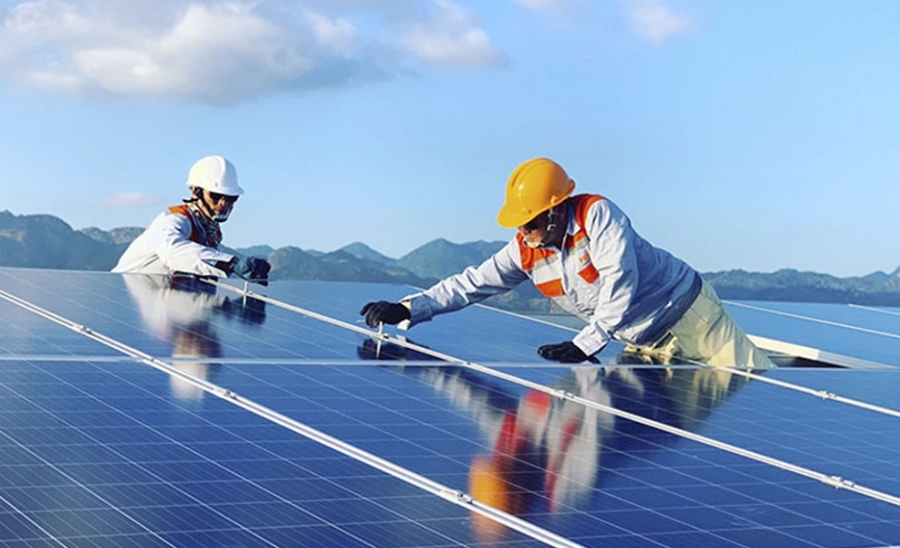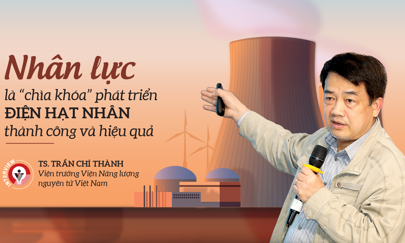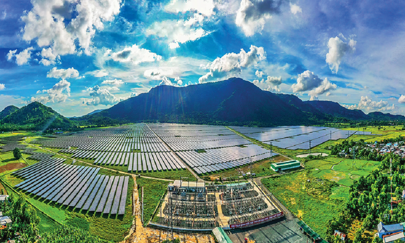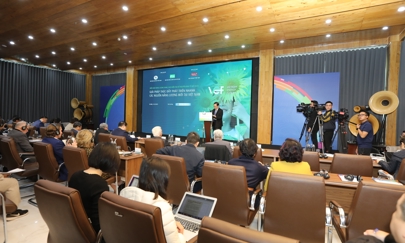Vietnam
holds substantial potential for the growth of new and renewable energy, but turning
its 2050 vision into reality requires more than just ambition; it calls for bold,
synchronized action to overcome key challenges in policy, infrastructure, technology,
and workforce development. As the country advances its energy transition, the key
question remains: How prepared are we to lead the charge?
To assess any country’s readiness
for the development of new and renewable energy, the global community currently
utilizes a number of differing toolkits, each designed for distinct evaluation purposes.
Among these is the Renewables Readiness Assessment (RRA) - a comprehensive tool
that evaluates readiness across multiple dimensions.
In addition, the Readiness for Investment
in Sustainable Energy (RISE) report, developed by the World Bank, focuses specifically
on assessing the legal and regulatory environment that facilitates investment in
sustainable energy.
Another important tool is the Energy
Transition Index (ETI), which measures a country’s overall readiness for transitioning
to clean energy, with significant emphasis placed on renewable energy as a core
component.
Progress,
policies, and challenges ahead
Current international assessments
typically rely on five key pillars: policy, institutional capacity, market readiness,
development models, and the ability to integrate renewable energy into the existing
system. While Vietnam has yet to reach the top tier in global renewable energy rankings,
it is no longer positioned at the lower end. Notably, the revised
National Power Development Plan for 2021-2030 with a Vision to 2050 (PDP8) clearly outlines the country’s strategic priority to
develop new and renewable energy sources, especially wind and solar power.
Vietnam has been introducing various
policies to encourage the growth of renewable energy, including a waiver on land
and sea use fees for the first three years of project construction, followed by
a 50 per cent reduction for the subsequent nine years; a guaranteed minimum contracted
power output of 70 per cent during the debt repayment period, up to a maximum of
12 years; grid connection priority for renewable projects integrated with storage
systems; and special incentives for power generation projects fully based on green
hydrogen or green ammonia.
In parallel, the government is prioritizing
investment in research and development (R&D) as well as the application of advanced
technologies, including the production of photovoltaic panels and wind turbines
tailored to Vietnam’s climate conditions. Significantly, from July 2024, a new decree
allows for the implementation of direct power purchase agreements (DPPAs), enabling
renewable energy producers to sell electricity directly to large consumers. Figures
show that more than 1,500 customers are eligible to participate in this mechanism.
Earlier pricing policies, most notably
the Feed-in Tariff (FiT) scheme from 2018 to 2023, spurred rapid growth in solar
and wind energy. However, they also imposed substantial financial pressure on Vietnam
Electricity (EVN), which posted losses of over $1 billion in 2023. The retrospective
adjustment of power purchase prices for 173 projects has raised concerns about regulatory
stability and investor confidence.
Mapping progress
According to figures, by 2024, Vietnam
had reached a total installed solar power capacity of some 16,500 MW, accounting
for 25 per cent of the country’s total power generation capacity. Among this is
103,000 rooftop solar projects with a combined capacity of more than 9,500 MW. Notable
large-scale endeavors include Dau Tieng 1, 2, and 3, with 420 MW, Phu My, with 330
MW, and BIM, with 330 MW. In wind power, capacity surged from virtually zero in
2018 to approximately 6,000 MW in 2023. Wind power potential remains highly promising,
with an estimated 221,000 MW onshore and up to 60,000 MW offshore.
Hydropower remains the largest low-carbon
energy source, accounting for about 31 per cent of the country’s electricity output,
with a total installed capacity of 23,664 MW from major plants such as Son La, Hoa
Binh, and Lai Chau. However, nearly all of Vietnam’s feasible hydropower potential
has now been exploited.
Biomass power is still modest, with
grid-connected capacity reaching some 350 MW as of the end of 2022, equivalent to
0.42 per cent of the national total capacity. Despite an estimated potential of
up to 60 million tons of agricultural waste per year, biomass energy development
faces significant hurdles in terms of technology and market readiness.
Among 85 transitional renewable energy
projects, 81 projects, representing nearly 4,600 MW in total capacity, have submitted
price negotiation documents; 63 have completed negotiations and signed preliminary
power purchase agreements; and 29 (equivalent to over 1,500 MW) have finalized procedures
for commercial operation.
Regarding grid infrastructure and
energy storage, Vietnam’s power transmission system, though modern relative to its
development level, has not kept pace with the rapid growth of renewable energy.
In 2020, solar power reductions reached up to 364 GWh, amounting to 15-20 per cent
of solar output. Though this situation has improved, investment in smart grids and
the modernization of infrastructure remains in urgent need.
As of 2024, Vietnam had installed
more than 2 million smart electricity meters, primarily in Hanoi and Ho Chi Minh
City. However, private sector participation in grid investment, particularly in
the sub-220 kV grid, is still limited. With appropriate incentives, the private
sector could play a vital role in resolving infrastructure bottlenecks.
In terms of energy storage, Vietnam
aims to achieve a capacity of 10,000-16,000 MW. Possible solutions are being researched
and implemented on a pilot basis, such as the VinFast Energy storage system in the
beach city of Nha Trang in south-central Khanh Hoa province and an MoU on pumped-storage
hydropower projects. However, projects like Bac Ai, expected to be operational by
2029, and Phuoc Hoa, Dong Phu Yen, and Don Duong have yet to secure specific investors.
One major barrier is the lack of a
clear legal framework for energy storage systems, especially on whether they should
be treated as independent power sources or as conversion and storage-return systems.
Energy storage investment is capital-intensive, with storage losses reaching 30-40
per cent, thus necessitating a well-defined and efficient pricing mechanism for
electricity purchase and sale.
Vietnam currently allocates around
0.4 per cent of its GDP to R&D on new and renewable energy, which is significantly
lower than its regional peers. The goal is to increase this to 2 per cent by 2030,
but this raises a critical question: Would such an increase be sufficient to meet
the demands of sustainable development, especially when other developing countries
are spending more on the sector?
At present, the number of R&D
institutions in the energy sector remains limited, mainly comprising a few research
institutes under the Ministry of Industry and Trade and technical universities.
R&D centers focusing on wind turbines, storage systems, solar panels, and green
hydrogen are still lacking in both capability and scale.
The technical workforce for renewable
energy is also a major weakness. Though there are specialized universities such
as Hanoi University of Science and Technology and the Electric Power University,
the number of graduating engineers and technicians still falls short of market requirements,
particularly in critical areas like maintenance, operations, and system integration.
Additionally, the green finance workforce - an increasingly vital component in attracting
investment - is also insufficient in both quantity and quality.
Vietnam’s investment needs for renewable
energy development are enormous. Relying solely on public resources will make it
extremely difficult to meet established targets, so mobilizing capital from the
private sector and international partners is essential. However, regulatory instability,
such as the retroactive adjustment of electricity prices for renewable energy projects,
has eroded investor confidence. Furthermore, the issue of renewable power reductions
also requires future resolution through the establishment of clear and fair criteria.
Translating ambition into capacity
Vietnam holds significant strategic
advantages in developing renewable energy. These include abundant
natural resources, particularly solar and wind, strong political will, as demonstrated
through key policies such as the revised PDP8, the Law on Electricity 2024, and
Decree No. 58/2025/ND-CP dated March 3, 2025, detailing the Law on Electricity on
renewable energy and new energy development, as well as rapidly-growing electricity
demand, which is increasing at an average rate of 10 per cent per year. Meanwhile,
the cost of key technologies like solar panels and wind turbines continues to decline.
Geographically, Vietnam is well-positioned to engage in international cooperation
and offshore wind power exports, targeting markets such as Cambodia, Singapore,
and Malaysia.
Looking ahead to 2050, Vietnam has set ambitious goals: reaching net-zero emissions,
increasing the share of renewables in the national energy mix to 74-75 per cent,
developing 14,000 MW of nuclear power capacity, and scaling up hydrogen infrastructure
to between 10 and 20 million tons annually. One standout objective is for half of
all households to adopt rooftop solar for self-generation and consumption by 2030.
Achieving this, however, demands the removal of deep-rooted barriers in regulation,
technology, infrastructure, and human capital.
To move from vision to reality, Vietnam must focus on several strategic priorities.
Chief among them is the need to establish a stable and transparent electricity pricing
mechanism. Pricing is a pivotal lever, able to either accelerate or undermine market
momentum. Past experiences with abrupt changes in FiTs have weakened investor confidence.
Competitive auctions and a robust national green classification system will be essential
to restore market trust.
Infrastructure also plays a critical role. Upgrading the transmission grid
and deploying large-scale energy storage systems must become a national priority.
Improving renewable energy forecasting capabilities will also ensure greater system
stability and efficiency.
On the innovation front, Vietnam needs to strengthen its R&D ecosystem
and local supply chains by fostering stronger collaboration between research institutes,
universities, and private enterprises. A focus on core technologies will help build
domestic resilience.
Human capital is another crucial pillar. Expanding vocational training, integrating
practical skills with theoretical learning, and addressing gaps in fields such as
biomass energy and clean technology operations will be key to developing a workforce
fit for the energy transition.
Finally, green finance must be optimized. Vietnam should leverage JETP funding
to unlock large-scale renewable investments and create a more favorable environment
for private sector participation. Innovative models like DPPAs and public-private
partnerships (PPPs) offer practical pathways to accelerate deployment while sharing
risk and responsibility.
(*)Dr. Nguyen Anh Tuan is the Standing Member of the Executive Committee at the Vietnam Energy Association












![[Interactive]: Toàn cảnh kinh tế Việt Nam tháng 8/2025](https://premedia.vneconomy.vn/files/uploads/2025/09/06/313418e027db4b97adaba4c542e2f904-10696.png?w=600&h=337&mode=crop)